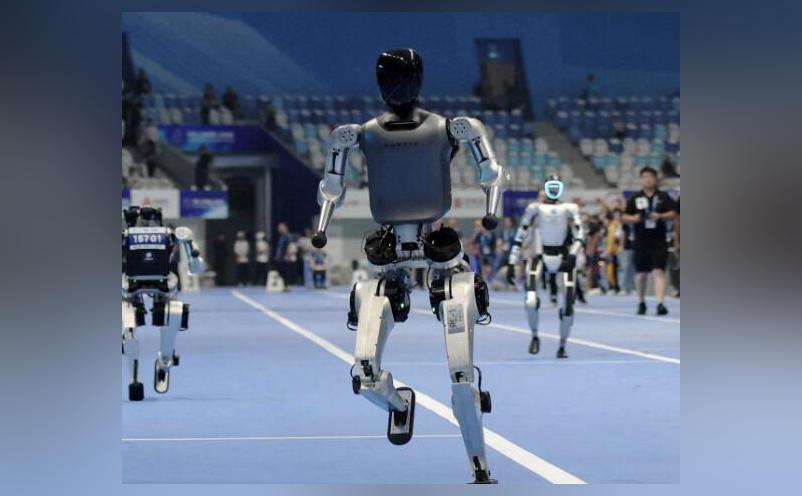
World’s First Humanoid Robot Games Begin in China, 16 Nations Participate
The world has witnessed many groundbreaking technological advancements in recent years, and the latest addition to this list is the world’s first humanoid robot games. The inaugural edition of the World Humanoid Robot Games has kicked off in Beijing, China, with a staggering 280 teams from 16 countries participating in this unique and exciting event. The robots are showcasing their skills in various sports, including track and field, basketball, table tennis, and more.
The idea behind this innovative competition is to provide a platform for robots to demonstrate their capabilities and compete with each other in a series of physical challenges. The games are not only entertaining but also offer valuable opportunities for data collection and research in the field of robotics. The organizers of the event believe that the insights gained from these competitions will be instrumental in further developing and improving humanoid robots.
The participating teams from 16 countries, including China, Japan, South Korea, the United States, and Europe, have designed and built their robots specifically for this event. The robots are equipped with advanced technologies such as artificial intelligence, machine learning, and sensors, which enable them to perform complex tasks and interact with their environment.
The competition is divided into several categories, each with its unique set of challenges. In the track and field events, robots are racing and jumping, showcasing their speed, agility, and endurance. In the basketball and table tennis matches, robots are demonstrating their ability to play sports and interact with humans. The events also include obstacle courses, which test the robots’ problem-solving skills and ability to navigate complex environments.
One of the most impressive aspects of the World Humanoid Robot Games is the level of realism and sophistication displayed by the robots. Some of the robots can perform tasks that are typically performed by humans, such as serving and returning balls in table tennis or dribbling a basketball. The level of precision and control exhibited by the robots is a testament to the advancements made in robotics and artificial intelligence.
The World Humanoid Robot Games are not just about entertainment; they also have significant implications for the future of robotics and artificial intelligence. The data collected from these competitions will be used to improve the design and functionality of humanoid robots, enabling them to perform more complex tasks and interact more effectively with humans.
The organizers of the event also hope that the games will inspire young people to pursue careers in science, technology, engineering, and mathematics (STEM). By showcasing the capabilities of humanoid robots, the games aim to promote interest and excitement in robotics and AI, potentially leading to a new generation of innovators and entrepreneurs.
In conclusion, the World Humanoid Robot Games are a groundbreaking event that marks a significant milestone in the development of humanoid robots. The competition is not only entertaining but also provides valuable opportunities for data collection and research, which will ultimately lead to improvements in robotics and AI. As the world watches the robots compete, we can only imagine the exciting possibilities that the future of humanoid robots holds.






